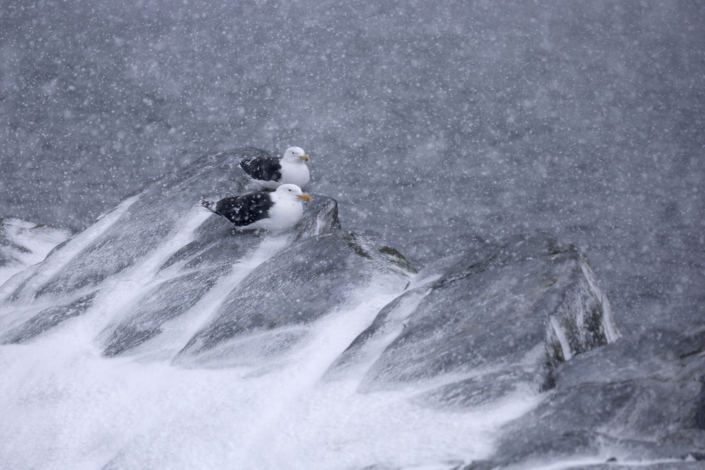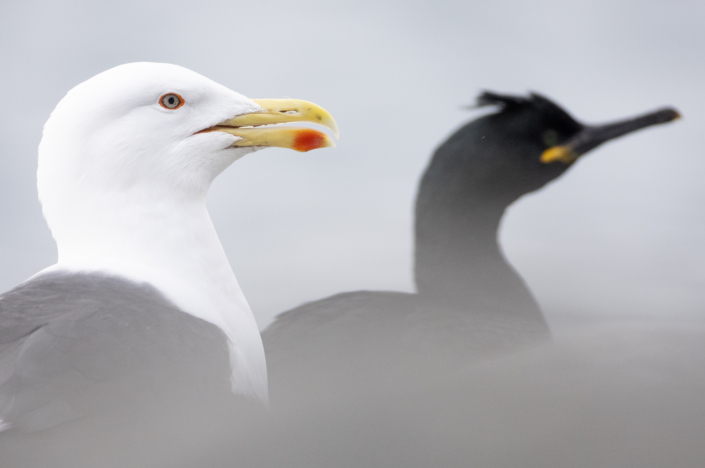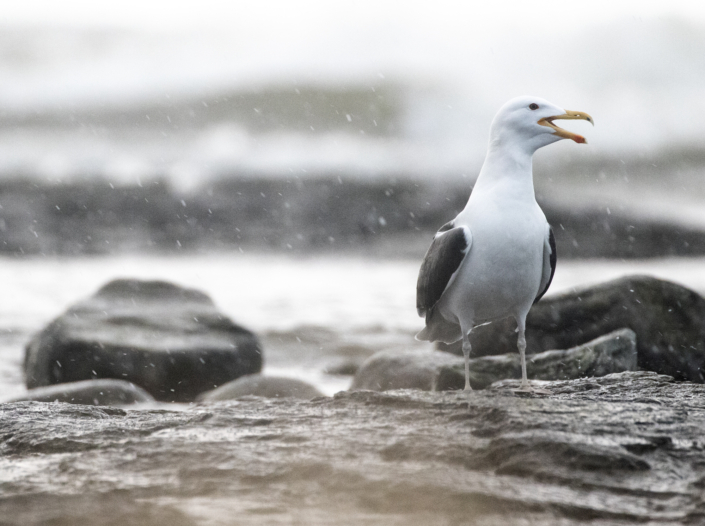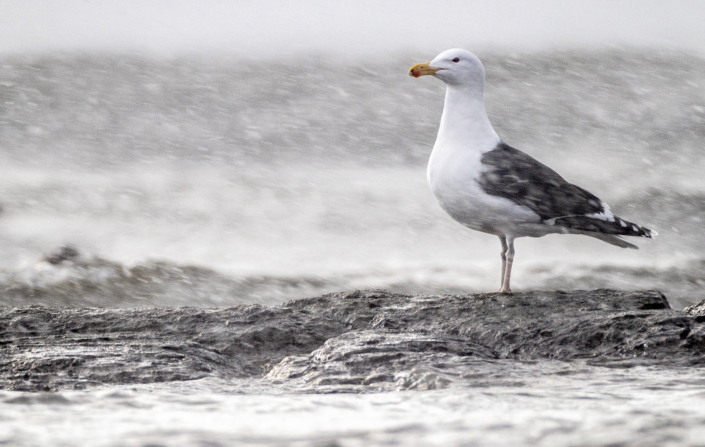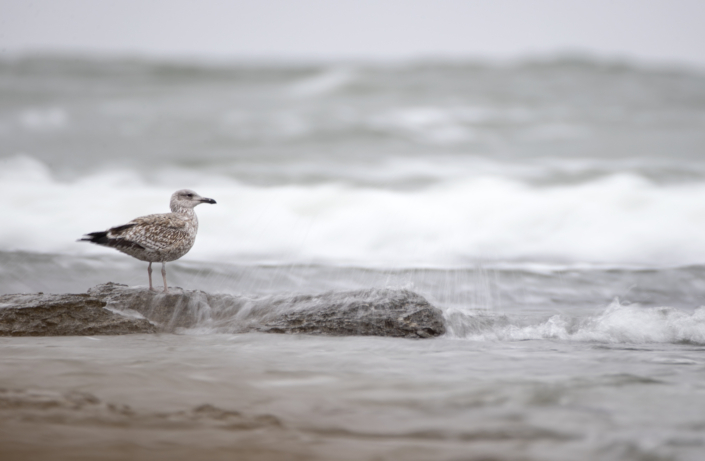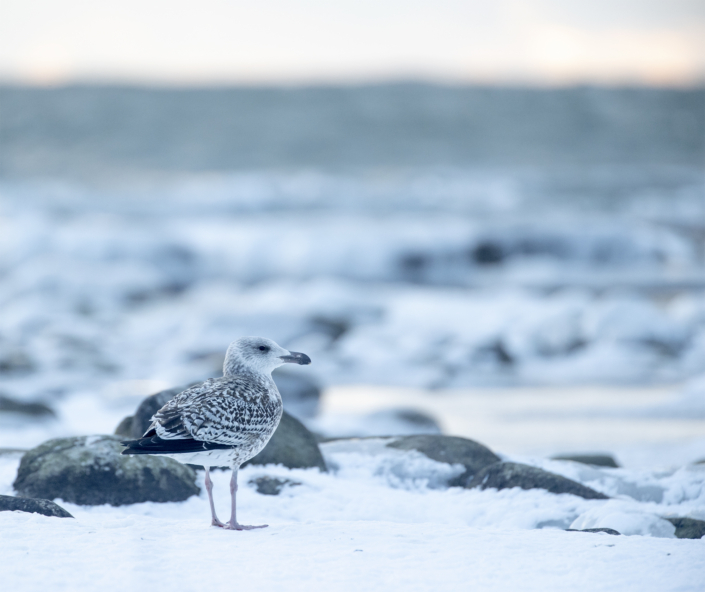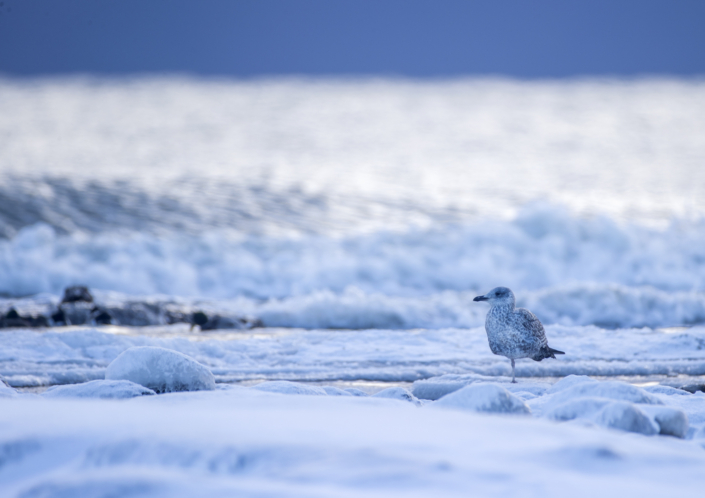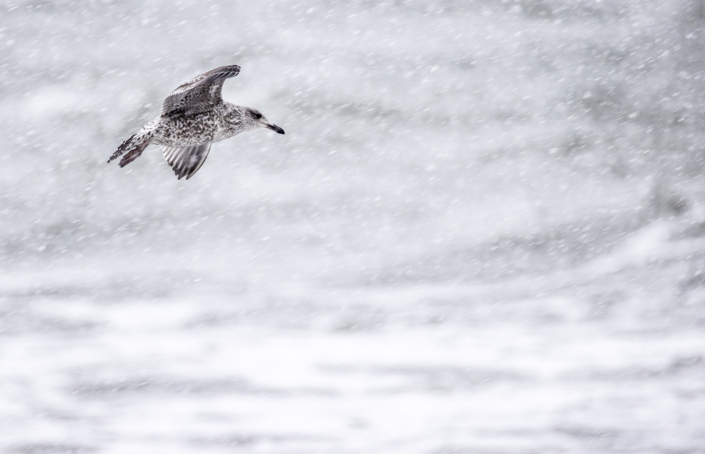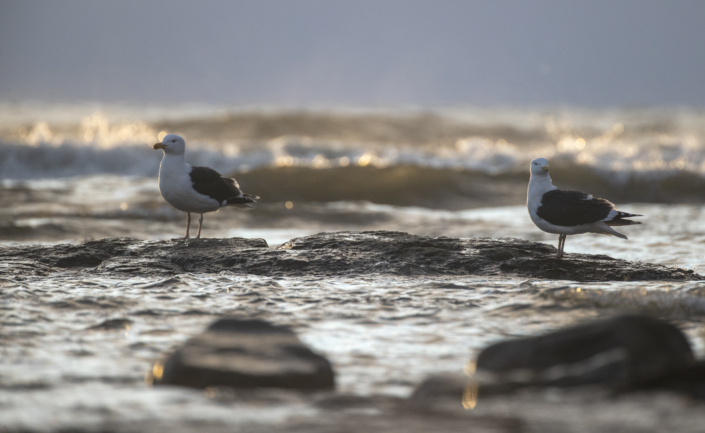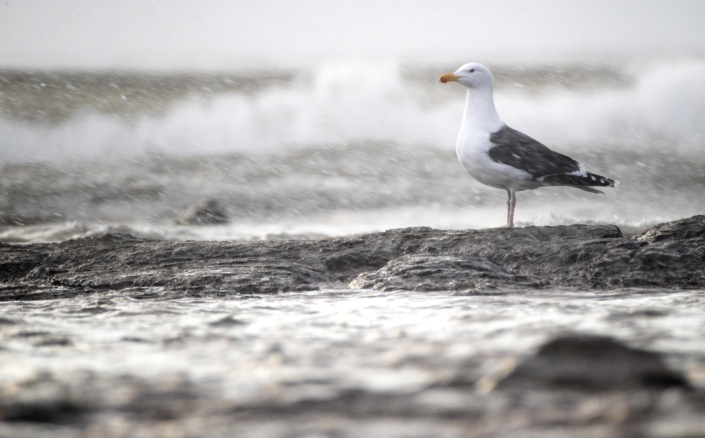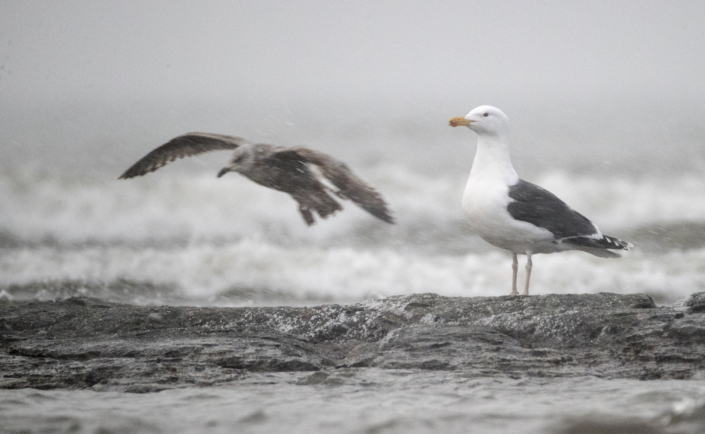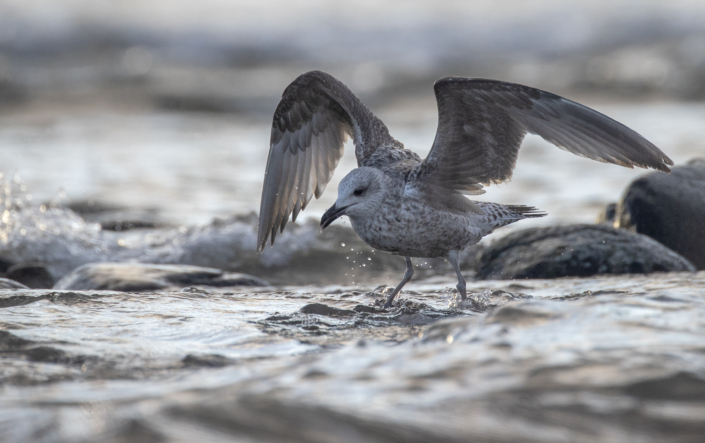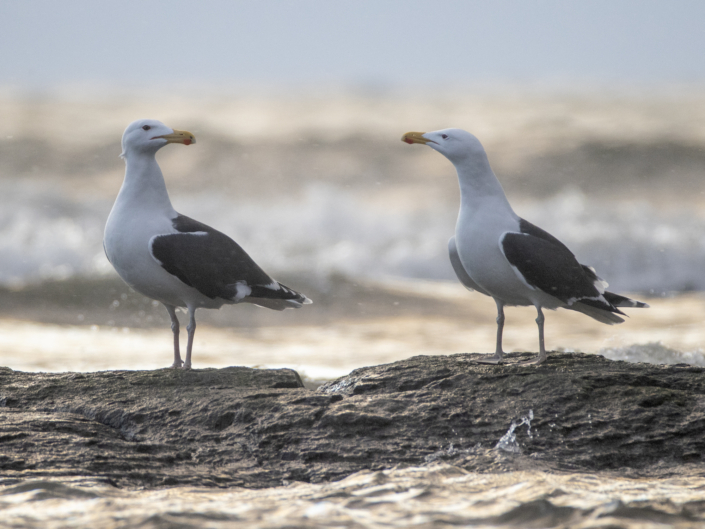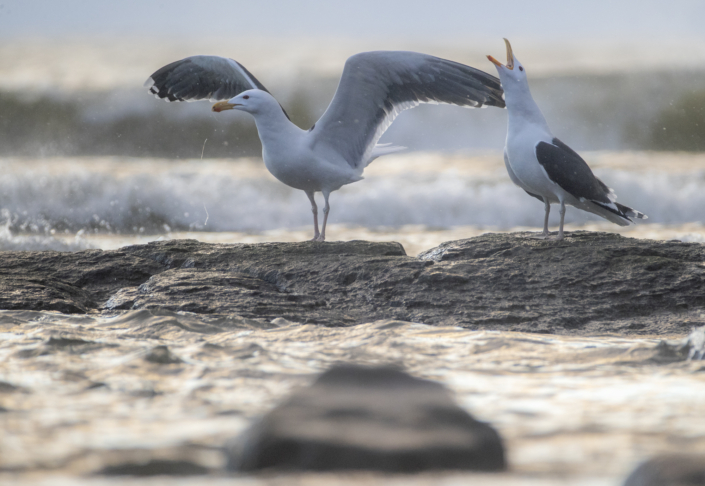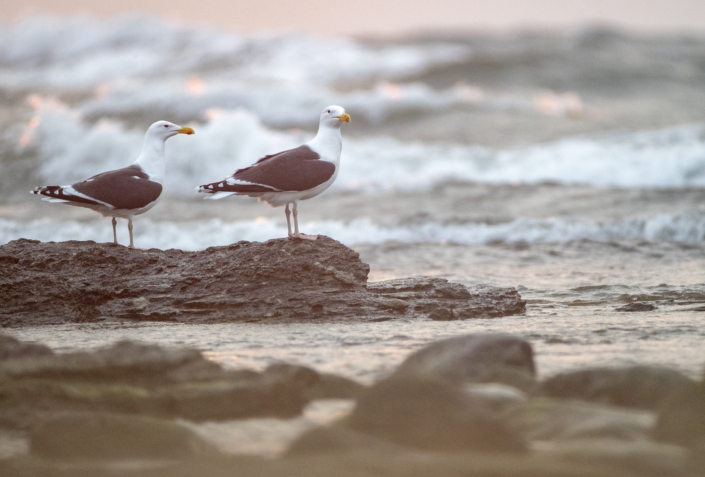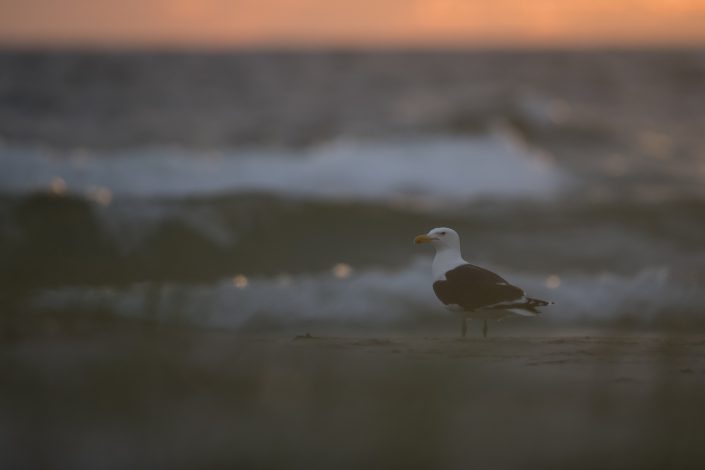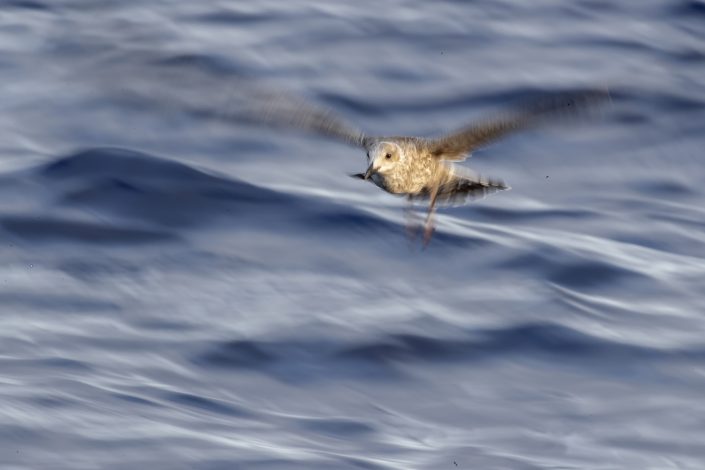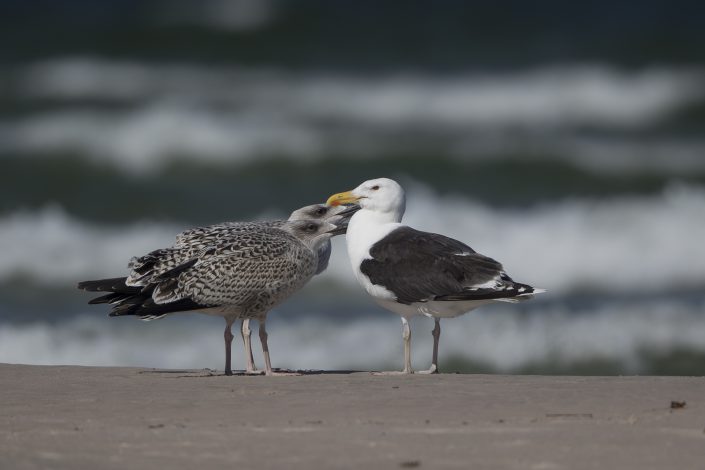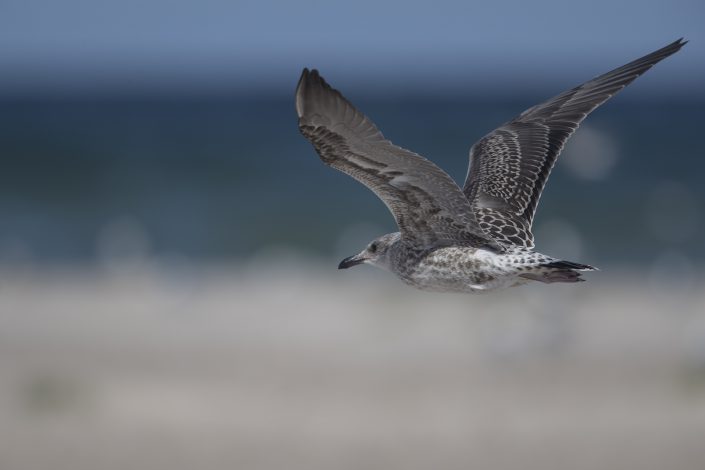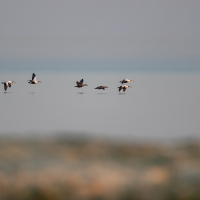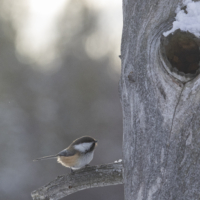This post is also available in: Swedish
Great black-backed gull – Larus marinus
Great black-backed gull – Larus marinus
The great black-backed gull (Larus marinus), also known as the greater black-backed gull or, informally, as the black-back, is the largest member of the gull family. It breeds on the European and North American coasts and islands of the North Atlantic and is fairly sedentary, though some black-backs move farther south or inland to large lakes or reservoirs. The adult great black-backed gull has a white head, neck and underparts, dark grey wings and back, pink legs and yellow bill.
The adult great black-backed gull is fairly distinctive, as no other very large gull with blackish coloration on its upper-wings generally occurs in the North Atlantic. In other white-headed North Atlantic gulls, the mantle is generally a lighter gray color and, in some species, it is a light powdery color or even pinkish It is grayish-black on the wings and back, with conspicuous, contrasting white “mirrors” at the wing tips. The legs are pinkish, and the bill is yellow or yellow-pink with some orange or red near tip of lower bill. The adult lesser black-backed gull (L. fuscus) is distinctly smaller, typically weighing about half as much as a great black-back. The lesser black-back has yellowish legs and a mantle that can range from slate-gray to brownish-colored but it is never as dark as the larger species. A few superficially similar dark-backed, fairly large gulls occur in the Pacific Ocean or in the tropics, all generally far outside this species’ range, such as the slaty-backed (L. schistisagus), the western (L. occidentalis) and the kelp gull (L. dominicanus).
Juvenile birds of under a year old have scaly, checkered black-brown upper parts, the head and underparts streaked with gray brown, and a neat wing pattern. The face and nape are paler and the wing flight feathers are blackish-brown. The juvenile’s tail is white with zigzag bars and spots at base and a broken blackish band near the tip. The bill of the juvenile is brownish-black with white tip and the legs dark bluish-gray with some pink tones. As the young gull ages, the gray-brown coloration gradually fades to more contrasting plumage and the bill darkens to black before growing paler. By the third year, the young gulls resemble a streakier, dirtier-looking version of the adult. They take at least four years to reach maturity, development in this species being somewhat slower than that of other large gulls. The call is a deep “laughing” cry, kaa-ga-ga, with the first note sometimes drawn out in an almost bovid-like sound. The voice is distinctly deeper than most other gull species.
It sounds like this
Recording by Martin St-Michel from Xeno canto




